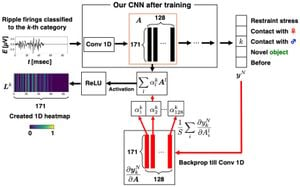Intel Corporation (INTC) reported its fourth-quarter earnings on Friday, delivering results slightly above market expectations. Although shares saw minor gains during pre-market trading, the tech giant faces significant headwinds going forward, prompting caution among analysts.
For the fourth quarter, Intel recorded earnings results indicating stronger-than-expected performance; still, concerns over weak guidance and competitive pressures have thrown its future prospects under the microscope. According to reports, Jefferies provided a mixed assessment, maintaining its "Hold" rating but adjusting its price target down from $25 to $23. The firm cited delays related to expected products, especially the Granite Rapids server chips, coupled with deteriorative gross margins.
KeyBanc Capital Markets also weighed in, reiteratively marking Intel with a "Sector Weight" rating. They forecasted challenging conditions for 2025, absent any distinct catalysts for growth. Their analysts expressed skepticism concerning the firm's turnaround path, reiteratively highlighting the lack of significant external foundry customers.
Evercore took another angle by reducing Intel’s price target from $26 to $22. They noted Intel’s guidance for the upcoming quarter, projecting revenue to decrease by approximately 14% quarter-over-quarter. This forecast prompted the new co-CEOs to reset expectations going forward.
Mizuho expressed similar concerns, trimming its price target from $21 to $20, pointing out the struggles Intel is facing particularly within the PC and server market segments. Notably, they did mention potential benefits stemming from the recent CHIPS Act and SCIP funding as silver linings for Intel’s prospects.
While Intel’s revenue forecast for the first quarter is set at $12.2 billion, it falls short of the consensus expectation of $12.8 billion. The company attributed this potential shortfall to tariffs imposed on their products, macroeconomic uncertainties, and increased competition, posing questions about future stability and growth.
According to analysts, Intel holds no major advantages from external foundry clients, contributing to the skepticism surrounding its future profitability and growth pathways. Blaring concerns about macroeconomic influences and competitive pressure are front and center.
This environment has raised alarms within the financial community, indicating uncertainty about how Intel can maintain its leadership within the semiconductor industry.
This quarter's mixed results and guidance reflect broader challenges within the sector as other competitors also scramble to position themselves, signaling this could lead to fierce competition moving forward.
The broader industry communicates caution as titans of technology reassess their strategies. Investors and stakeholders will pay close attention to Intel’s next moves as it attempts to stabilize its operations and recover from perceived setbacks.



